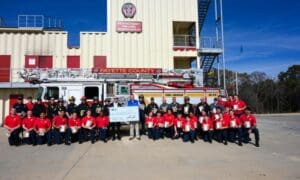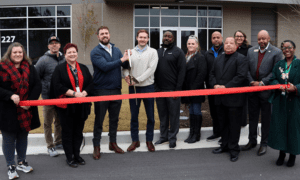County staff have devised a plan that would allow the East Fayetteville Bypass to be built only with local dollars at a significant savings from the initial cost, but doing so would eat up the remaining transportation sales tax funds, leaving the final phase of the West Fayetteville Bypass undone for now.
The Fayette County Commission is expected to make a decision on which option they will pursue. The local-funded only option for the East Bypass would cost about $29 million, while there is $25.5 million left in SPLOST funds. The final phase of the West Bypass will cost between $7-$13 million depending on the final alignment selected.
If the commission decides to finish the West Bypass, it could begin work on the first phase of the East Bypass, which involves design and right-of-way acquisition only, but also comes with a potential $7 million in federal funding. The construction of the entire road would occur in the second phase.
The West Fayetteville Bypass is designed to stretch from Ga. Highway 85 South at Harp Road to reach Ga. Highway 54 at the newest traffic light just west of Piedmont Fayette Hospital, then north to end at Ga. Highway 92 near West Bridge Road.
The third phase of the West Fayetteville Bypass will extend it from the current terminus just south of Hwy. 54 all the way southward to Hwy. 85, using mostly existing roads such as Lester Road and Ebenezer Church Road.
The East Fayetteville Bypass is designed to start at the north on Ga. Highway 85 at Corinth Road, then cross Ga. Highway 54 east of Fayetteville on a new road path that would ultimately link up with McDonough Road and the existing County Line Road where it would end at the intersection of South Jeff Davis Drive and Inman Road.
If done to the federal standards, the East bypass would cost a projected $48 million. But by using only local money for the project, the cost estimate is pared down to $29 million.
To get the savings in the local-only version of the project, the county discarded the two-foot paved shoulder on either side of the road in favor of a 10-foot wide grass shoulder, said County Public Works Director Phil Mallon. The county also would reduce its right of way purchase to 80 feet, instead of the 120 feet needed for the county’s federally funded plan, which would give enough room to four-lane the road if needed in the future.
Another cost savings would be from the elimination of a second bridge by using box culverts for a stream crossing, Mallon said. The county is also eliminating an upgrade of the waterlines along the road, Mallon added.
If the commission decides to go with the local option for the East Bypass, Mallon recommends having the final design work bid out to a contractor.
One advantage of using the pared-down local approach is that the project can move much faster than if constrained by the federal regulations, Mallon noted.
If the county stays with the federally-assisted process, Mallon estimated it would take about two years before the right-of-way acquisition process could begin.
At the county’s retreat March 10, Commissioner Lee Hearn said he favored building “as much as we can of the East Fayetteville Bypass versus phase three of the West Fayetteville Bypass.”
Hearn said the East Bypass would handle a lot more traffic than the third phase of the West Bypass.
Commissioner Allen McCarty noted that the West Bypass could be built at a later date. But Commission Chairman Herb Frady said he would rather finish the West Bypass first.
There is one option that would allow both bypasses to move forward, which is the passage of a regional sales tax referendum in July. The East Bypass is a project that would be funded by those revenues, which would free up the remaining local SPLOST funds for the West Bypass, county officials said.











Leave a Comment
You must be logged in to post a comment.